Last updated on March 5th, 2024
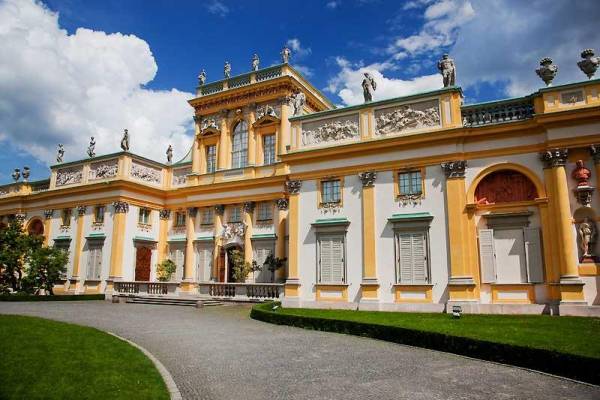
Wilanów Palace, © Can Stock / photocreo
Visit Warsaw Old Town
When you visit Warsaw Old Town, you will see an old town that was rebuilt after the 1944 Uprising when Hitler razed the city. The Old Town Market Square and the Syrenka mermaid sculpture mark the center of the Warsaw Old Town. To the north is the Barbican fortified gate. To the south are St. John’s Archcathedral, the Royal Castle, and Castle Square. The Royal Castle was also rebuilt after World War II. The Sigismund (Zygmunt) Column in honor of the 17th century Polish king, marks the start of the Royal Route south to the Wilanów Park-Palace Complex. Try a Warsaw Hop-On Hop-Off Tour or a Half Day City Sightseeing Tour of Warsaw.
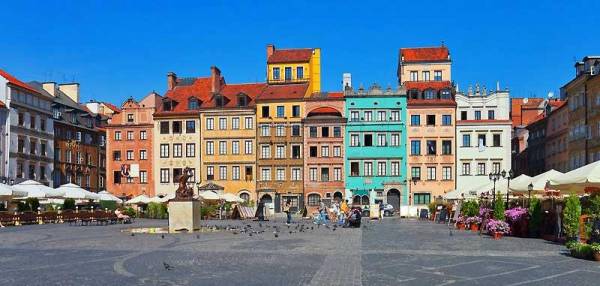
Old Town Market Square, © Can Stock / scanrail
Krakowskie Przedmiescie Street
Stroll the cobbled street called Krakowskie Przedmiescie, which leads south from the Old Town past St. Anne’s Church, the National Opera House, poet Adam Mickiewicz Monument, the Carmelite Church, the University of Warsaw, the Presidential Palace, the Hotel Bristol, Czapski Palace with the Academy of Fine Arts and the Parish of the Holy Cross. Just off the main street you can also find the Tomb of the Unknown Soldier and the National Gallery of Art.
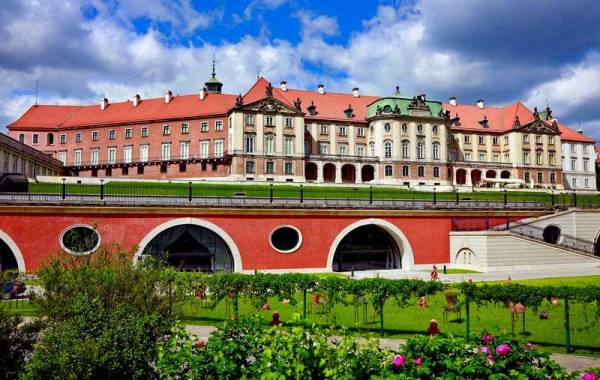
Kubicki Arcades, Royal Castle, © Can Stock / plrang
Visit Warsaw Jewish Ghetto
The Nazis created the Warsaw Jewish Ghetto in 1939 when they took over Warsaw. The Warsaw Jewish Ghetto became a very large area on the western edge of the Old Town. In 1943 the Warsaw Ghetto Uprising was the first resistance by the Jewish Ghetto against the Nazis. The Jewish Ghetto resisted again in the Uprising of 1944. In response, Hitler razed the city. The Warsaw Jewish Ghetto is gone, but you can still visit the Jewish Historical Institute, the Museum of the History of Polish Jews, the Warsaw Rising Museum and the Jewish Cemetery.
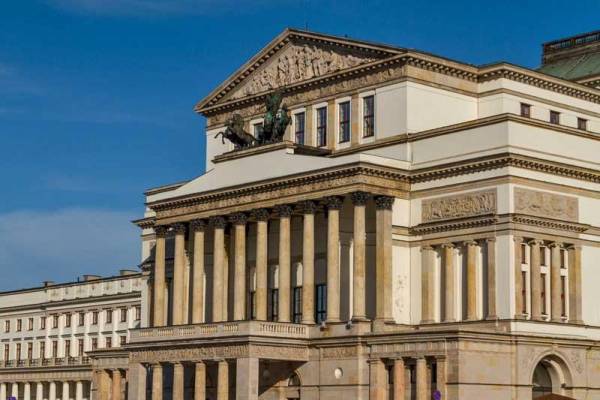
National Opera House, © Can Stock / AndreySt
Museum of the History of Polish Jews
The POLIN Museum of the History of Polish Jews was built on the site of the Warsaw Jewish Ghetto. The Monument to the Ghetto Heroes is on the grounds too. Walk the Path of Remembrance between the POLIN Museum of the History of Polish Jews and the Umschlagplatz Monument, which was the Nazi collection point for sending Jews to concentration camps.
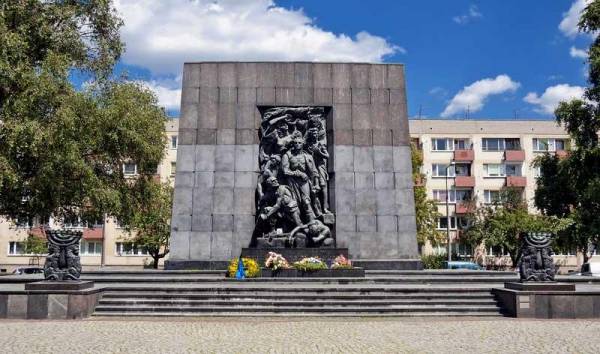
Ghetto Heroes Monument, © Can Stock / linfernum
Warsaw Rising Museum
The Warsaw Rising Museum recalls the history of the Uprising of 1944, which resulted in the razing of the city by the Germans. Related to the Uprising, the Warsaw Monument to the Insurgents is located near the Old Town. Consider an organized tour to the museums, monuments and cemetery of the Warsaw Jewish Ghetto.
Visit Warsaw – Hotels
- AAA STAY Premium Apartments Old Town
- Novotel Warszawa Centrum
- Radisson Blu Sobieski
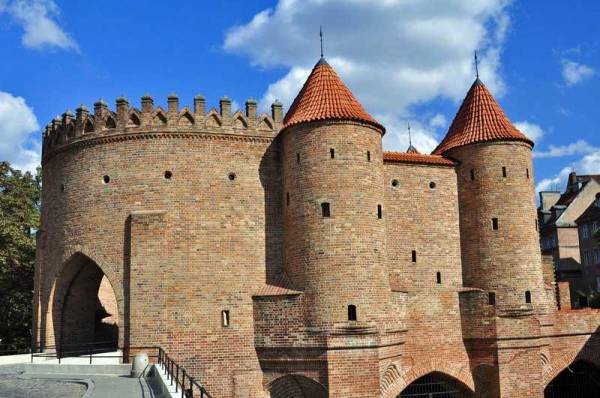
Warsaw Barbican, © Can Stock / FER737NG
Visit Warsaw – Lazienki Park
Lazienki Park is a center for gardens, museums, theater and concerts in Warsaw. In Lazienki Park you will find the Chopin Monument, the Chopin Summer Concert Amphitheater, the Old Orangery & Royal Theatre, the Warsaw Center for Contemporary Art, Myślewicki Palace and the Palace on the Isle built by King Stanislaw. Parliament House is just off the northern end of the park. You can easily spend a full day visiting Lazienki Park.
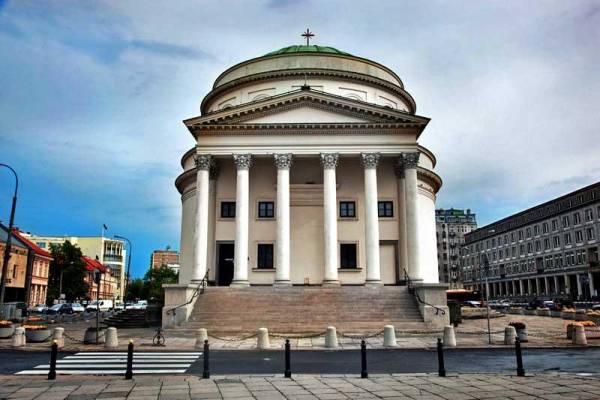
Three Crosses Square, © Can Stock / photocreo
Visit Warsaw Praga District
The Praga District is on the opposite bank of the Vistula River from Warsaw Old Town. The Praga district has older buildings that survived World War II. The Warsaw Zoo is on the opposite bank from the Old Town too.
Visit Warsaw – More Sights
- Three Crosses Square and St Alexander’s Church are on the old Royal Route that continues south to Wilanów Palace.
- St. Kazimierz Church and the Multimedia Fountain Park are along the Vistula River just north of the Barbican and the Old Town.
- National Stadium
- Temple of Divine Providence – and important Roman Catholic building.
- The Warsaw Christmas Market takes place next to the Central Station each Christmas season.
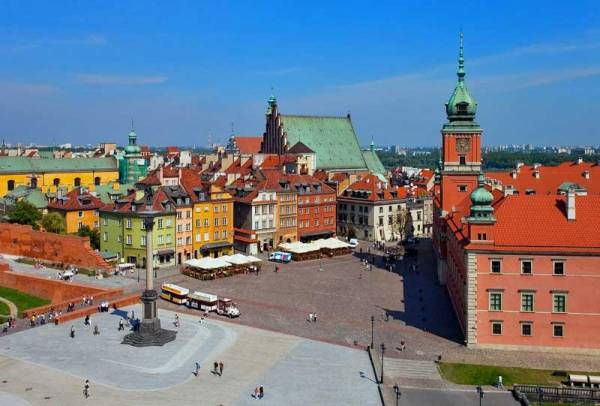
Castle Square, © Can Stock / scanrail
Visit Warsaw – More Museums
- Fryderyk Chopin Museum in Ostrogski Castle.
- Maria Sklodowska-Curie Museum and the discovery of radium.
- Copernicus Science Centre
- Palace of Culture and Science – great views of the city from the tallest building in Warsaw. It was Stalin’s gift to Poland.
- National Museum
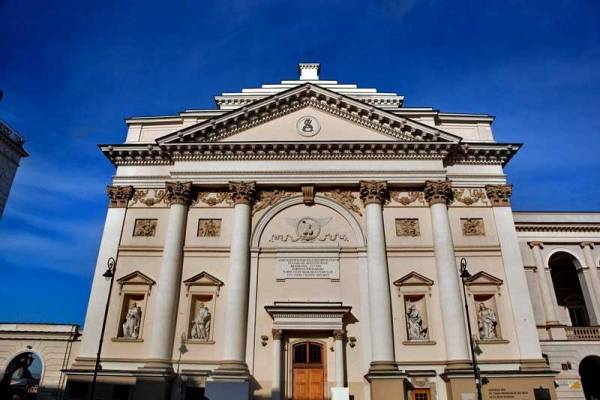
St Anne’s Church, © Can Stock / photocreo
Get to Warsaw
Air travelers use Warsaw Frédéric Chopin Airport to get to Warsaw. The airport is about 6 miles (10 km) from downtown Warsaw. You can take the #175 bus directly from the airport to the Old Town. To reach the Warsaw Central railway station from the airport, take the subway or the #175. Buses, trams and rail are managed by ZTM, the Warsaw Municipal Transport Authority.
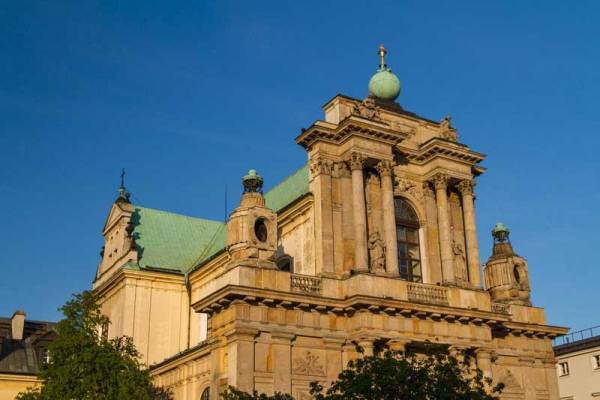
Carmelite Church, © Can Stock / AndreySt
Warsaw Weather
Warsaw weather is a colder, more continental climate than cities to its west. Expect average highs of about 70 F (22 C) during the summer months of June – August. Average lows during the summer are about 65 F (18 C). During the winter months highs average just below freezing, while lows average about 22 F (-5 C). Rainfall is fairly constant throughout the year, but with slightly higher amounts of rainfall during the summer. August gets our vote as the best time of year to visit Warsaw.
Visit Warsaw – Background
Warsaw is the capital of Poland and its largest city. More than 3 million live in the city. King Zygmund III moved the capital from Krakow to Warsaw in the 1500s. The most impressive feature of Warsaw is its dedication to rebuilding after World War II, when 85% of its buildings were destroyed. As a result, Warsaw is sometimes called the Phoenix City. The Warsaw Old Town is actually a new town, because its historic buildings were all rebuilt after World War II. The two most famous historical residents of Warsaw are musician Fryderyk Chopin and the discoverer of radium, Madame Currie.

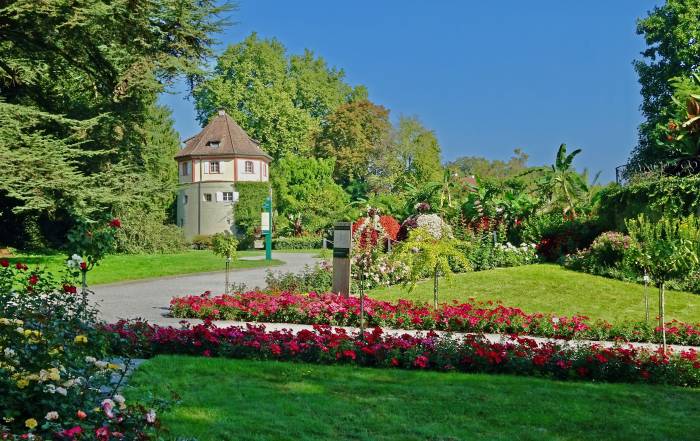
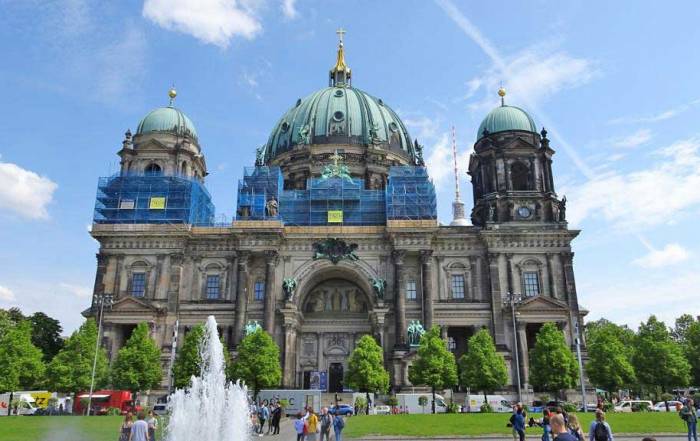
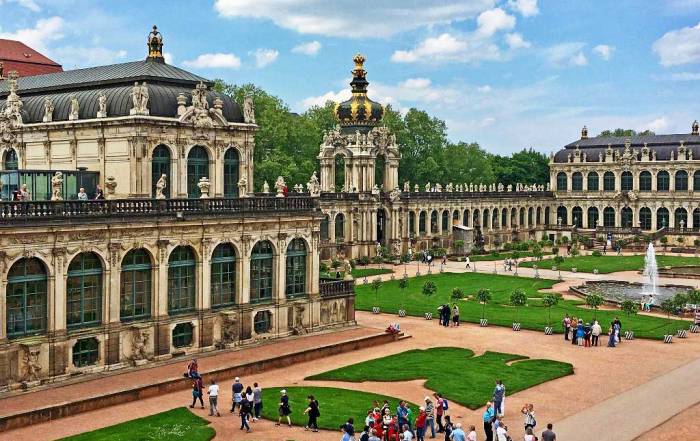
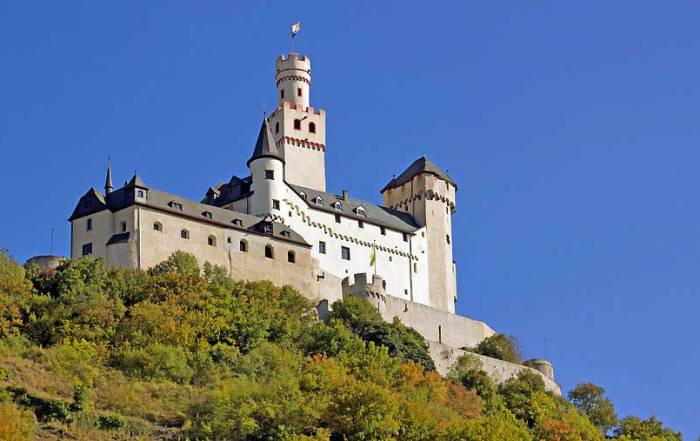
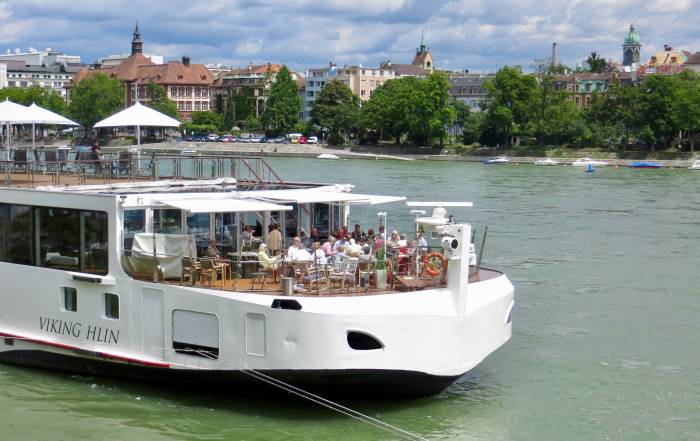
Leave A Comment